How to start an Online Subscription Business
with WordPress and the free GetPaid plugin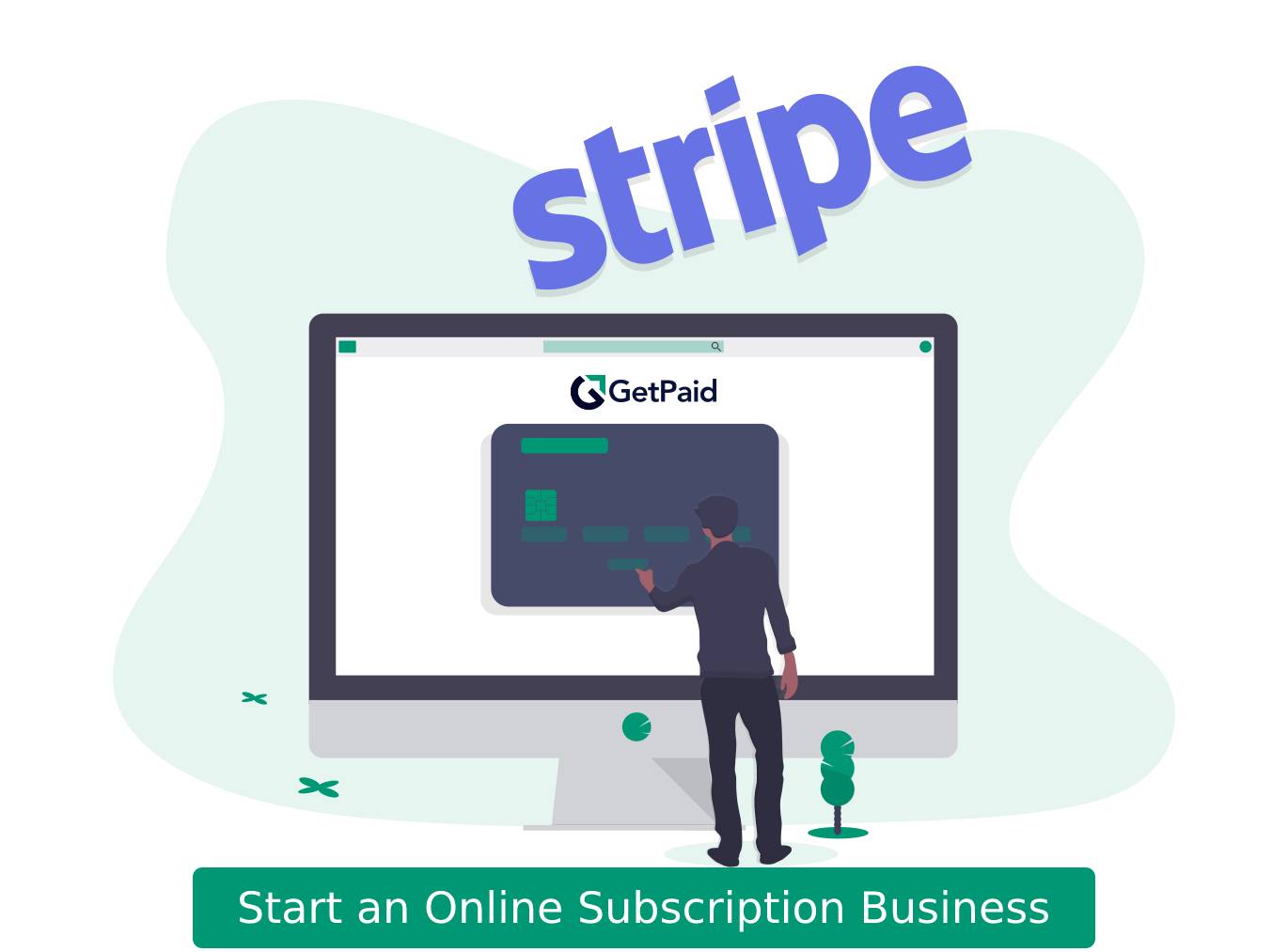
We humans, we love our convenience.
Anything that saves us extra steps, steals our hearts.
What if we could replace dull razors without stepping out of the house? Meet Dollar Shave Club.
Out of pads? Lola’s subscription box is waiting at your doorstep, so you’re never on your own again.
Need to set up and streamline subscriptions for your online business?
GetPaid will handle transactions, item inventory, paid trials, quantity discounts, and everything else in between for your WordPress website.
You get the gist.
If you have a product or service that’s in constant demand like the guys above, then you’re fit to set up a built-for-efficiency, online subscription business model.
In fact, it would be downright criminal not to, considering that UBS (financial services giant) predicts that by 2025, the subscription economy will skyrocket to $1.5 trillion. That’s trillion with a T.
That means huge opportunity and demand for subscription businesses.
As I said, we love our convenience.
So, we put together this comprehensive guide on how to start an online subscription business for entrepreneurs, business owners, agencies, and web developers alike.
After reading, you’ll be an expert on starting a successful subscription business to take your business to the next level.
Ready? Let’s get started.
What is a subscription-based business model?
Before diving into the technical portions, it’s important to understand clearly what subscription services entail.
So let’s get the ABCs out of the way, shall we?
It’s really straightforward: subscription business models provide a product(s) or service(s) accessibly to customers in exchange for periodic payments—be it on a weekly, bi-weekly, monthly, quarterly, or annual basis.
Your Netflix subscription is monthly, while your gym membership might be bi-weekly.
The periodic payment structure depends on your company’s policies and internal logistics.
It works best when your value is in demand on a recurring basis.
At GetPaid, it’s a reliable software and support service, so the subscription-based model helps streamline things for clients who need to keep their site running 24/7 while selling subscription boxes or services.
Why should I start a subscription business? (Pros)
If you’re new to subscription-based modeling, then it’s natural to feel a little hesitant when you’re starting off.
What’s in it for you? Why bother?
Ecommerce subscription businesses offer online shoppers an easy, personalized, and lower-cost method to purchase a necessary service on a recurring basis.
But aside from making your customers happier, let’s unpack how subscription boxes can help you as a business:
Stable, recurring revenue
A subscription sign-up is a customer’s promise that they’ll pay you, and most of the time, it pans—resulting in a reliable revenue stream.
By knowing your constant subscription revenue, you can streamline everything from sales forecasting to inventory planning.
And, you’ll know how much recurring monthly revenue to allocate toward business growth.
Offer a personalized experience
Subscriptions create a virtuous cycle allowing deeper insights into your customer’s behavior over time.
That allows you to improve experiences, make tweaks, and personalize packages to different needs.
Unlike a rigid, one-off product, brands that offer tailored experiences increase purchase likelihood by 80%.
A personalized service fosters loyalty and thereby increases customer lifetime value.
Save on customer acquisition cost
Engaging cold customers is one of the hardest and most costly operations of a business.
But if you start a subscription box, regular customer payments will fuel a good chunk of your business operations and growth.
That way, you don’t need to spend a fortune on marketing efforts and acquisition campaigns at the cost of other areas in your business.
Instead, you can leverage word of mouth marketing through customer referrals for new business, since they can result in five times more sales than paid ads.
We trust our friends and family more than a random business, that’s why.
88% of people more deeply trust a brand it’s recommended by someone close.
Easier upselling or cross-selling
Subscriptions allow you to build out service tiers for businesses at different levels with different priorities.
And since the repeat business fosters trust and understanding between the buyer and seller.
It’s that much easier for them to take your word on additional services or a plan upgrade to complement their growth.
In fact, loyal customers are 78% more likely to pay higher premiums just to stay with your brand.
What are some things to look out for? (Challenges)
Of course, with all good things come some drawbacks.
Subscription box businesses are no exception.
But it’s nothing you can’t overcome, though.
Here are some things to look out for when starting a subscription model for your business.
Subscription-customer management can get complicated
A subscription business can get logistically tricky (managing customer records, recurring billing, communications, etc.) with so many users at any one time.
It’s easy to make mistakes with an inaccurate customer database or an inefficient management system, which can hurt relationships.
You need to use an effective subscription management system that can track positions in the sales process, customer history with your company, and enable seamless migration between plans, to name a few.
It should also keep detailed records of all invoices and financial transactions.
Failed transactions
One-off transactions with online payment methods like a credit card either go through or don’t.
It’s really on the customer—whether they get to enjoy your rockstar product/service or not.
On the other hand, regular automated payments can affect you more directly since they may fail amid your promised contract and sales forecast.
They’re naturally more prone to interrupt a subscription because of card expirations, insufficient funds, and maxed-out limits.
That can mean inconsistent renewals, high churn (loss of customers), and profit.
Even though it’s on the customer, a payment error can cancel a much-needed subscription for them, which can hurt relationships.
Subscription pricing plan management
Every business is different in its levels of service.
One may have 3 subscription options, another 5, you might have one.
And although they’re great opportunities for upselling and offering customers catered plans, they can also make recurring billing difficult to manage.
Make sure to properly flesh out your subscription price planning.
Better avoid making adjustments later—which can frustrate and confuse customers especially if it’s an upcharge.
Updating prices and offering discounts should be done seamlessly without complications.
Real-time flexibility in this department allows your company to yield greater customer appeal.
What subscription business model is right for me? (With examples)
There are three main subscription models (according to McKinsey) that you can choose from:
- Access
- Curation
- Replenishment
Each has its own pros and cons but ultimately, you need to pick the best fit for your business.
Your choice for a subscription-based model depends on your physical/digital products and business goals and priorities.
The Access business model: bang for your buck
Access subscription businesses are simple and straightforward: subscribers pay for services/products monthly for lower prices or member perks.
13% of subscriptions follow an access business model.
It’s those email signups you see for special discounts on clothing websites.
Or look at Netflix, Spotify Premium, or Amazon Prime as a few examples: you’re paying regularly for on-demand and ad-free entertainment.
Or, free same-day delivery and an overly-grateful thank you for being a prime customer every time you talk to customer service.
Pros
- The existing customers receive more value with their exclusive access to perks. This allows you the opportunity to provide personalized offers that will preserve their loyalty.
- Opportunities to bundle. Providing customers with a wide array of products/services (including non-tangible like discounts on future purchases) under one membership can make them more satisfied, loyal, and justify higher prices.
Cons
- Time-consuming. Since Access isn’t about a single product or one-off service you can just add on to checkout, you’ll need to invest time, thought, and strategy to make your membership offering robust and updated to be valuable to your customer.
The Curation business model: subscription boxes made for you.
Say hi to your typical subscription box business that surprises you with new items and highly personalized experiences.
55% of total subscriptions are in curation—which goes to show how important personalized products are in subscription box ideas.
So if you look at NurseLuxe, they help frontline workers like nurses treat themselves by delivering a subscription box with various self-care products.
From coffee to soap, from apparel to books, whatever it is, they mix and match in every box—curated to your preferences.
Another example is BlueApron, which gives the user control over what their ingredients and recipes are and delivers a subscription box weekly to make meals.
Pros
- High-profit potential: with personalized and hand-made adjustments, subscription boxes can be very lucrative because the customer is paying for something exclusive—most costing anywhere between $15 to $100 a month.
- Gain loyal customers: personalized deliveries mean a deeper relationship with clients or customers. It shouts a big “hey, I got you.”
Cons
- High churn potential: The excitement of a new product or box is what may drive customer infatuation for such businesses, which means churn rates may also be high once things die down. As these products are usually niche non-essentials, subscription box businesses thrive when the economy is good, but are the first to suffer during a recession.
- High operational costs and complexity: acquiring customers tend to be more expensive for subscription boxing, along with higher operating costs like packaging, branding, and regular shipping.
The Replenishment business model: refilling on essentials.
Savings and customer convenience are the focus of this model.
With subscriptions to replenishment services, consumers can ensure that they continue to receive essential items—often at a discounted price. 32% of subscriptions have to do with replenishment.
Your products are an important consideration when it comes to this business model because they may not need frequent replenishment.
Items like razors, diapers, vitamins, and pet food are good candidates for the replenishment model.
Look at the men’s grooming subscription box business, Dollar Shave Club, where they replenish your monthly cosmetic and shaving utensils.
Pro
- Higher conversion & retention rates: products that need frequent replenishment tend to be inelastic in demand (e.g. hygiene and grooming products). As they’re everyday necessities, active subscribers are more willing to keep purchasing them compared to more luxury products.
Cons
- Thinner profit margins: you’ll probably have noticed that the nature of replenishment products is low-cost. Really low cost. So to compete with competitors you’ll need to offer similar prices in your online store, which means cutting margins and operating at scale by selling lots of products.
Keep in mind that you don’t have to stick strictly to one model for your subscription business idea.
Many businesses have overlap.
BlueApron for example (the one that sends ingredients to your home to cook) is a mix of the curation and replenishment revenue model since they personalize your meals and refill you every week.
Pro tips: setting your subscription business up for success
Subscription businesses are most at risk from churn across the board.
But the upside is that once new customers find a service they enjoy, they tend to be extremely loyal to it.
These tips will help you run a profitable subscription business and cut down on churn rates:
Validate your product
First things first: you have to validate the center of your subscription–and that’s your product.
Some products may be oversaturated, like the meal-kit category, which has high rates of cancellation within the first six months.
Other products may simply not be suited for a subscription-like business.
A massage gun, which is made to last years, not months.
Of course, that doesn’t mean you can’t provide accessories and start a subscription box.
The massage head attachments may wear out, for example.
Or razor blades may dull out, while the electric razor body is built to last.
Be strategic and creative with your approach.
If there isn’t a subscribable product or service, you can always create one to complement your main product.
Don’t be afraid to validate subscription ideas from your customers on social media platforms, either.
Flesh out your business goals & strategy
If you’re entering the subscription box market, what do you want to accomplish?
Increase revenue, accelerate growth?
Defining these goals early on is vital since it helps you build the best pricing strategy and value proposition for your specific goals.
Long-term planning is crucial when your recurring revenue depends on monthly or annual fees.
By defining these goals, you can then build your buyer personas and structure your pricing tiers.
You can build a better overall strategy by matching the features in your tiers with the needs of your different target customers.
Personalize for a loyal customer base
This applies to all three kinds of subscription model businesses, but especially the curation and access models.
Unsurprisingly, subscription companies that fall short on this have low customer retention, McKinsey reports.
See, unlike a one-off product, existing and potential customers need a reminder that they’re valued and important if they’re going to keep giving you money.
Something that speaks to them.
Flexing tailored items in your social media marketing can also help with the acquisition as it shows you care to shout your customers.
In your average marketing campaign, a lack of personalized content could mean an 83% lower response rate.
Streamline payments to avoid a logistical nightmare
Your bills should be accurate, intuitive, and adjustable to maximize subscriber acquisition and market share if you want to scale.
Think of it as your company’s first official step in setting a transparent, long-lasting customer relationship.
So make it structured and look pretty.
The best, most friction-less way to optimize cash collections for monthly recurring revenue is automation.
Subscription businesses need to maximize collections and minimize write-offs while collecting cash quickly.
With overseas sales, there are a variety of payment gateways to evaluate and implement.
The processes can take up to a month.
Following the definition of your market, you must determine which collection paths would be most effective.
You may not even be aware of some of them.
Nurture customer relationships
Being in the subscription business means being in the customer service business.
Most subscription-based businesses, and likely yours too, will get most of their revenue from existing businesses.
That’s why strong customer relationships matter—or you can say goodbye to your existing subscribers and their monthly subscriptions.
It’s important that you provide your customers with intuitive and comprehensive tools for managing their subscriptions throughout the entire lifecycle.
As a best practice, you should have a 24/7 support service and customer success outreach program.
Monitor customer usage and adoption closely to reduce churn.
And of course, a social media presence is great for fostering a community.
Because stable customer bases are the key to compound growth.
Track and learn from metrics
Subscription business models are always evolving.
Many subscription-based businesses are flying in the blind since traditional financial systems don’t provide metrics.
To make the subscription business model work for you, start reading key metrics such as bookings, revenue, and profitability of your subscription business.
It could provide unparalleled insight into the value of your customers.
Don’t forget to track MRR (Monthly Recurring Revenue), ARR (Annual Recurring Revenue), LTV (Customers lifetime value), ARPU (Average Revenue Per User), retention rate, churn rate, recurring profit margin, and growth efficiency index to be a successful subscription box business.
How to build your own subscription business with WordPress and GetPaid for free
So, now that you know:
- What a subscription business model is.
- Why you should start one and the challenges that may arise.
- The different kinds of models on the subscription market, and pro tips for building a successful membership site.
It’s time to learn how to start a subscription.
The great thing in today’s age is that you don’t have to be a coding expert to build out a site for your subscription boxes.
Tools like WordPress and GetPaid make the process ridiculously simple.
We’ll show you how easy it is in this section:
Step 1: Setting up your WordPress site
Of course, before you can add subscription features, you’ll need a built-out website.
It’s easy and straightforward—as it was meant to be, but for the sake of this article, we’re going to Fastrack that beginner process and focus on setting up the subscription aspects.
There are great online courses and videos that can walk you through the entire process if you don’t have an existing website.
Step 2: Add the GetPaid plugin
So after your website is up and running, you’ll want a robust plugin to handle your online subscription boxes and packaging.
We got you covered in that department: easily install the GetPaid WordPress Subscriptions plugin in a matter of seconds.
- Log into your WordPress dashboard.
- Navigate to the Plugins menu.
- Click Add New.
- In the search box, type in “WP GetPaid,” and click Search Plugins.
- Once you found WP GetPaid (creators are AyeCode Ltd), simply click Install Now.
- Go back to your Plugins menu and activate the plugin.
Or you can install the plugin manually by downloading the payment plugin and uploading it to your web server through your FTP application. You can learn more about the manual installation here.
Step 3: Create the Items for sale and make it a subscription
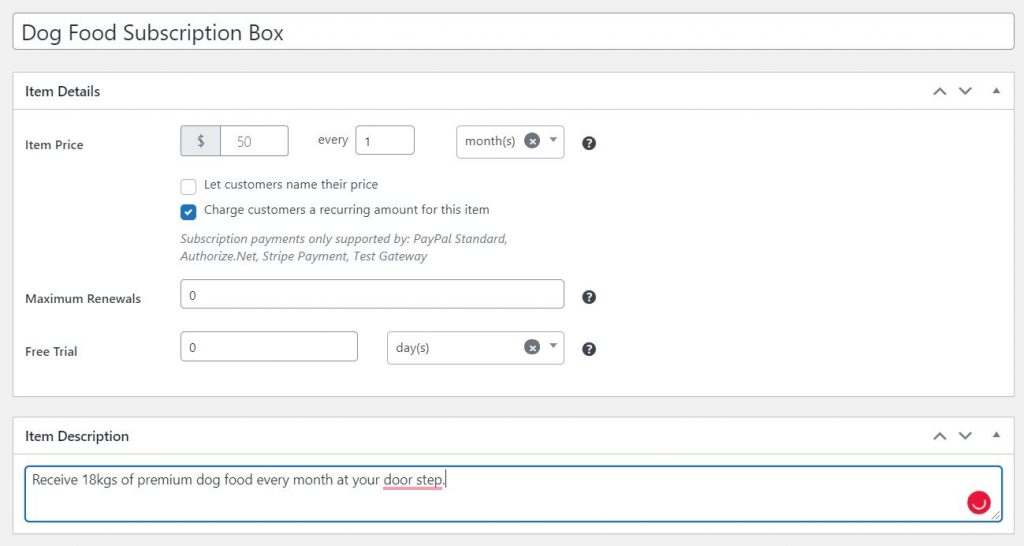
- Go to GetPaid > Items > Add New
- Give the item a title
- Check the option: Charge customers a recurring amount for this item
- Add the item price and setup price reoccurrence.
- If needed add an Item Description.
- Publish the item
You are good to go, now you can add the item as a Buy Now Button or a Check out form inside your landing page.
Step 4: Set up your inventory (optional)

Customers can only subscribe if there’s something to subscribe to, right?
That’s what we’re doing here: setting up stock inventory. You can set a number in stock and get notified when you’re low on product.
GetPaid also allows you to prevent over ordering, in case a customer orders more than what you have in stock.
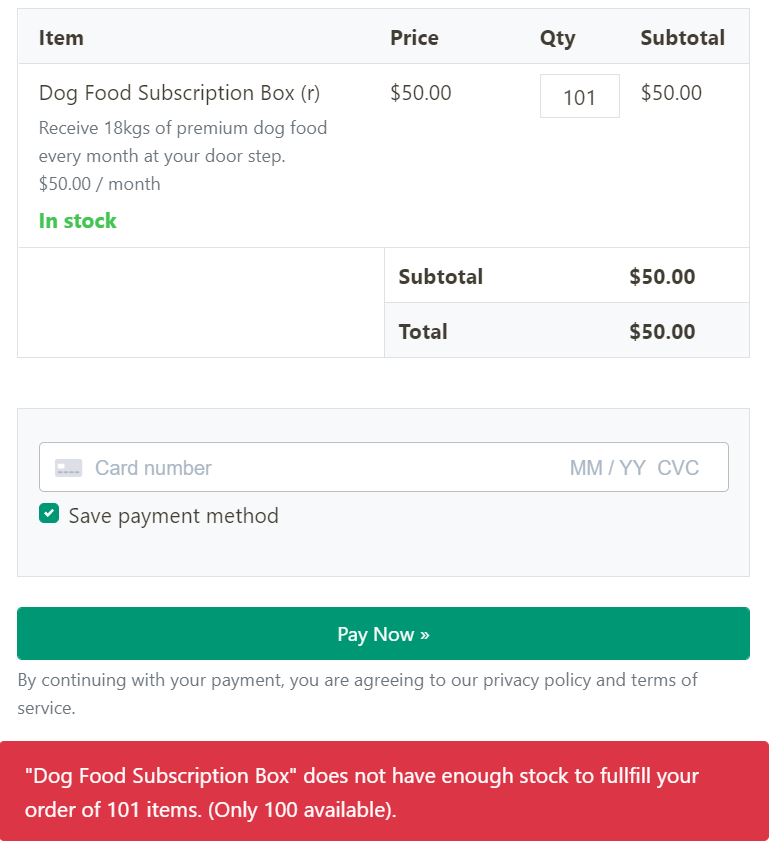
Step 5: Setup quantity discounts (optional)
Speaking of bulk orders, GetPaid also has a premium add-on that enable simple quality discounts.
If you want to award a discount for your customers that are ordering in numbers, this add-on allows you to vary prices based on quantity.
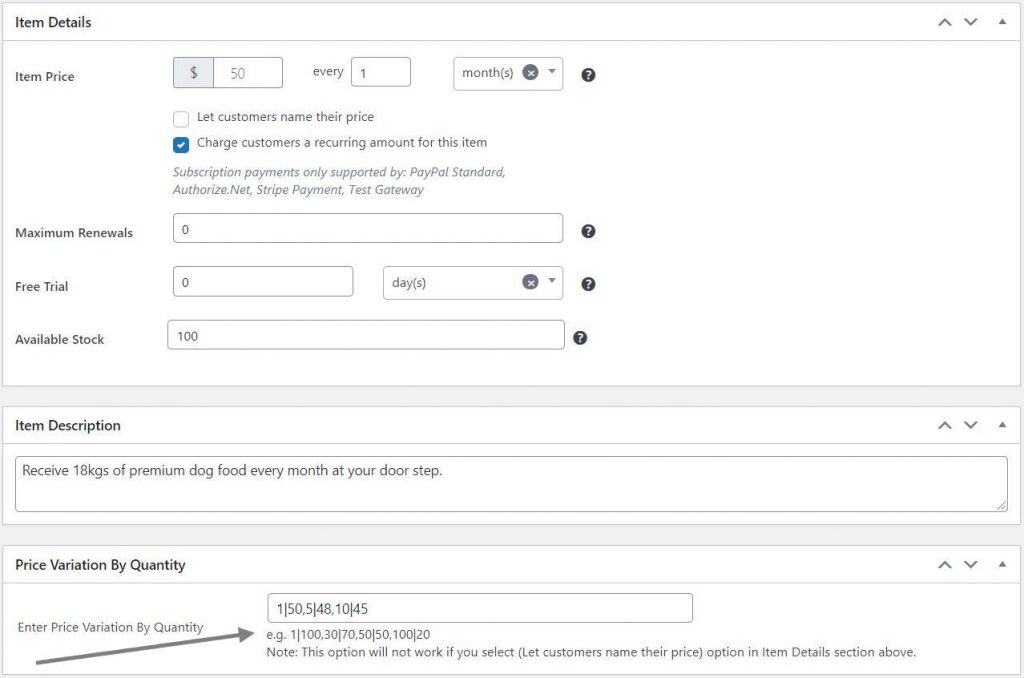
Simply set your price for item in the “item price” bar.
Then in the “Price Variation By Quanitity” space, use the provided notation to set discounts.
In this example we used this formula: 1|50,5|48,10|45
“1|50” means that between 1 to 4 quantities of the same item, the price is $50. “5|48” means that if you’re buying 5 to 9 or more of that item, the price is $48 ($2 discount). For 10 and up, the price is $45 ($5 OFF).

Step 5: Setup digital downloads (optional)
If your subscription deliverable is a digital file instead of a physical product, then GetPaid features a premium Digital Downloads add-on made for you.

This will allow you to deliver digital files directly or complement them to your main items, from where your buyers can download them safely from the payment confirmation page, invoice, or “my downloads” page.
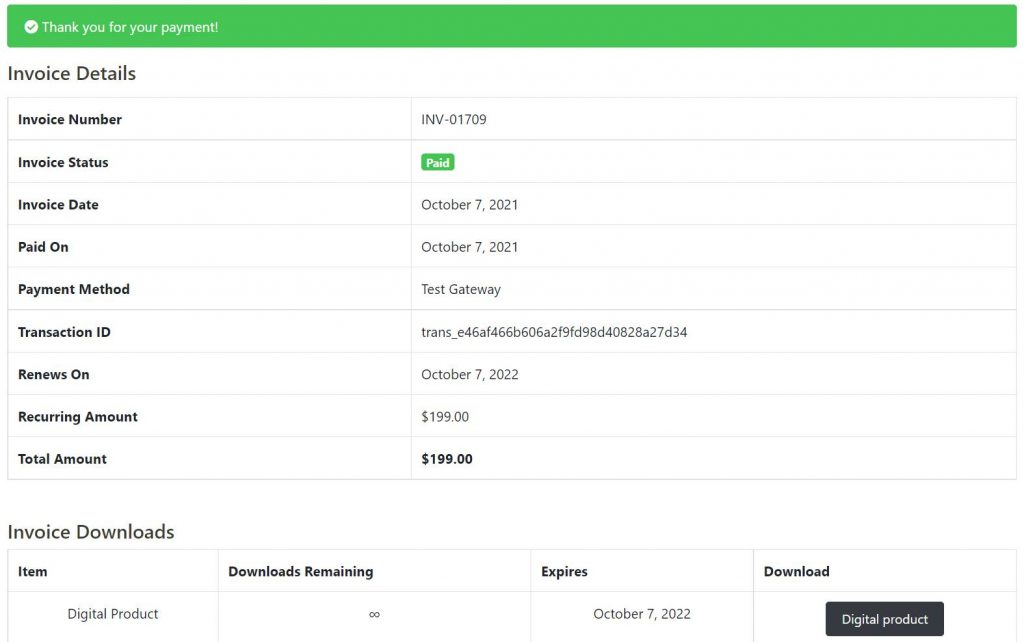
Conclusion
Turning your online store into a membership site with subscriptions can be great for retaining new customers and sustaining business operations.
Save this article as a complete guidebook to getting started on WordPress to create your subscription business with GetPaid by your side.
It’s time to start winning with a loyal customer base.
Even tech giants like Apple and Google, who sell predominantly one-off products like computers and cellphones, have found opportunities to add subscription-based pricing plans for their businesses (namely cloud storage).
You can also start an online subscription business selling listings and create a website with a business directory plugin.
What’s your opportunity?